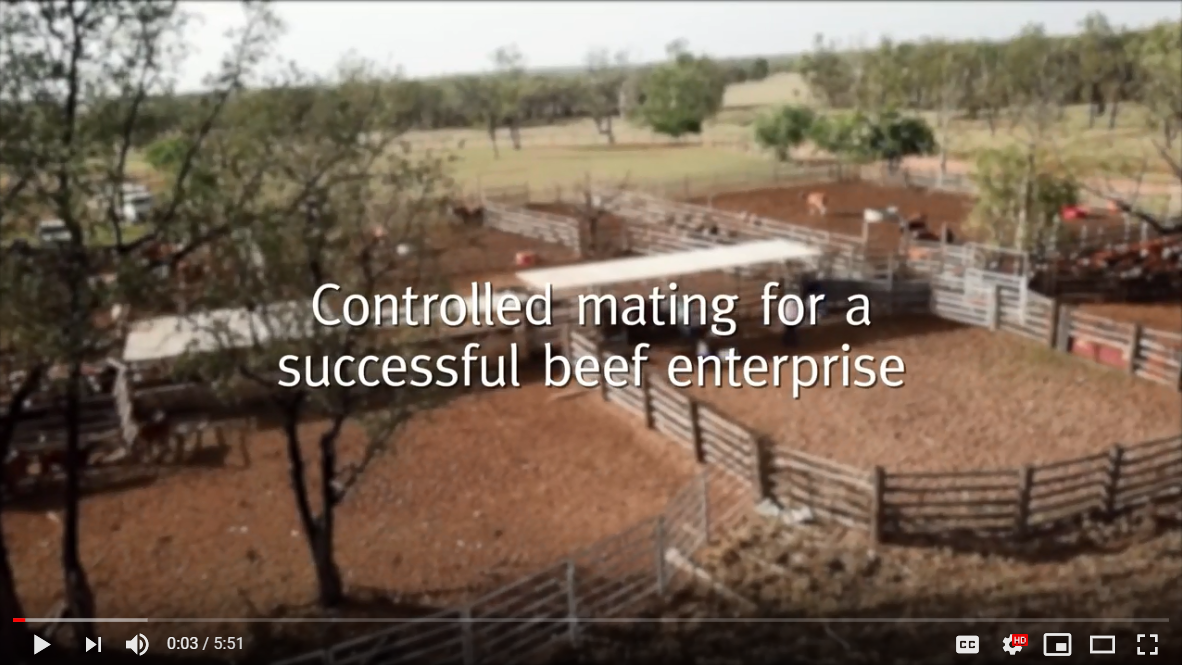The many benefits of controlled mating
 Controlled mating is the focal point of the latest video produced by the Department of Agriculture and Fisheries (DAF), featuring Beef Extension Officer, Byrony Daniels, beef producer, Doug Burnett, and cattle veterinarian, Alan Guilfoyle.
Controlled mating is the focal point of the latest video produced by the Department of Agriculture and Fisheries (DAF), featuring Beef Extension Officer, Byrony Daniels, beef producer, Doug Burnett, and cattle veterinarian, Alan Guilfoyle.
Long-time user of the controlled mating management system, Doug Burnett says “We time our calving window to ensure the peak pasture quality occurs at a similar time to when the calves are starting to put a greater demand on the breeders. This then means that we can keep a decent body condition on our cows and makes it easier for them to get back in calf.” The resulting tight calving group has had additional benefits for the business, as the progeny presents as an even line when it comes to marketing, making them attractive to potential buyers.
Byrony Daniels, DAF Beef Extension Officer, mentions that the benefits of controlled mating don’t have to stop there. “Controlled mating makes it easier for unproductive animals to be identified and culled. It is a useful tool to maximise production while matching grazing pressure to carrying capacity which leads to healthier and more productive pastures, better ground cover, reduced sediment loss and better water quality.”
Cattle veterinarian, Alan Guilfoyle says that incorporating pregnancy testing and foetal ageing allows for accurate budgeting and forecasting, however once a controlled mating program is introduced, cattle managers can’t rest there. “Once we’ve gone to the trouble of implementing a controlled mating system, we need to protect our investment. Not only in the herd but also in our management programs of what we are trying to achieve. The first thing we’ve got to do is get the cow in calf and that we’ve eliminated all the other obstacles preventing her from doing so.”
To learn more about controlled mating, the benefits and the requirements of implementing a successful program, watch the six minute video on the Queensland Agriculture YouTube channel.